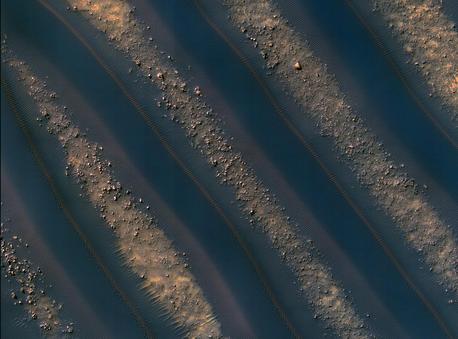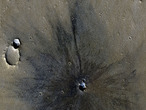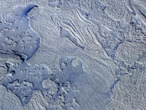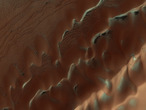Mars Orbiter Resumes Duty
New Stunning Pictures from Mars
 © NASA/JPL-Caltech/University of Arizona |
Dunes of sand-sized materials have been trapped on the floors of many Martian craters. This is one example, from a crater in Noachis Terra, west of the giant Hellas impact basin.
The dunes here are linear, thought to be due to shifting wind directions. In places, each dune is remarkably similar to adjacent dunes, including a reddish (or dust-colored) band on northeast-facing slopes. Large angular boulders litter the floor between dunes.
The most extensive linear dune fields known in the solar system are on Saturn's large moon Titan. Titan has a very different environment and composition, so at meter-scale resolution they probably are very different from Martian dunes.
Source: NASA/JPL
Mars Orbiter Resumes Duty
New Stunning Pictures from Mars
 © NASA/JPL-Caltech/University of Arizona |
Dunes of sand-sized materials have been trapped on the floors of many Martian craters. This is one example, from a crater in Noachis Terra, west of the giant Hellas impact basin.
The dunes here are linear, thought to be due to shifting wind directions. In places, each dune is remarkably similar to adjacent dunes, including a reddish (or dust-colored) band on northeast-facing slopes. Large angular boulders litter the floor between dunes.
The most extensive linear dune fields known in the solar system are on Saturn's large moon Titan. Titan has a very different environment and composition, so at meter-scale resolution they probably are very different from Martian dunes.
Source: NASA/JPL








